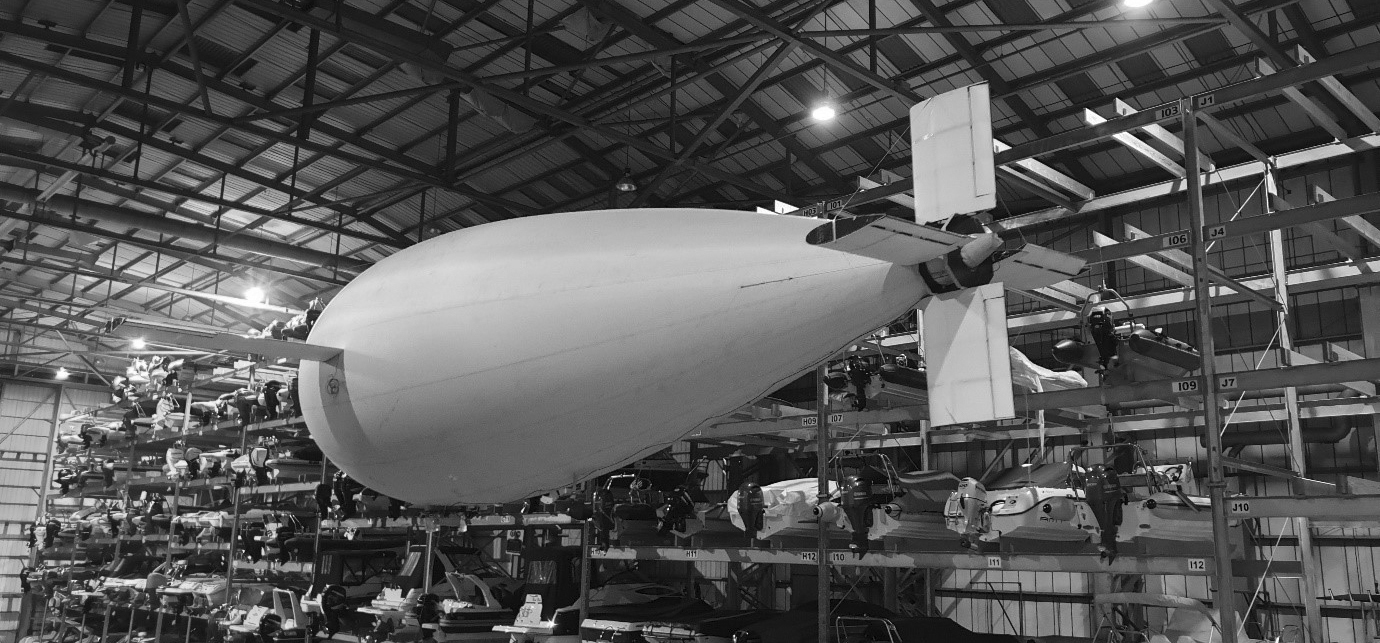Airship Fabric Development


Background
Arville have worked as a key partner in the development of a specialist material used to construct the outer-shell of a new type of lighter-than-air vehicle.
Application
Under a project funded by Innovate-UK, the UK’s Innovation Agency, and bringing together SME’s, High Value Manufacturing Catapults and Academia, the ultra-long-endurance aeroplane uses the concept of variable-buoyancy propulsion that has been exploited previously for underwater remotely-operated-vehicles (ROVs) but has never before been used successfully for the propulsion of a large-scale aircraft.
Problem
Conventional ‘off-the-shelf’ materials did not meet the strict physical criteria needed for the project, either being too heavy, the wrong construction, or not strong or durable enough to withstand the rigours of such a demanding application.

Project Brief
The key requirements for the customer were:-
- A fabric with strict strength/weight ratios – as light as possible but with as much tensile strength as could be achieved.
- A fabric which was resistant to constant weathering and UV exposure
- A fabric which was stable at extremes of temperature (hot/cold climates)
- A fabric which was impermeable to gas and suitable to contain a pressurised atmosphere

Development
The fabric had a number of conflicting requirements to meet which were key to the overall success of the project. High levels of tensile strength and tear resistance generally require heavier, denser fabrics but in this instance the weight threshold was critical so the fabric had to offer as much strength as possible at the lightest mass.
Arville’s previous experience weaving fabrics for high impact inflatables used within the Defence and Aerospace industries meant we were well placed to adapt those materials into similar, lightweight versions for this project. Using a high performance Vectran (Liquid Crystal Polymer) yarn we produced a very light but massively strong base fabric onto which we applied a specialist coating to close the fabric and make it gas-tight, giving protection and durability against constant UV exposure.
Process
As part of a consultative approach we worked closely with the project engineers to firstly establish all of the physical parameters that the fabric needed and how it would interact with other components within the structure of the aircraft. Whilst the engineers knew how they needed it to perform, they didn’t have the level of textiles expertise to know what the construction of the fabric should be so relied heavily on our experience of weaving technical textiles.
As part of the development we went through several different iterations of the fabric, testing and refining each version at every stage of the manufacturing process until we achieved a material that hit all of the test criteria.
Outcome
The world’s first large variable-buoyancy-powered autonomous uninhabited air vehicle (UAV) was test flown successfully.
The 15m-long, 10.5m wingspan, ‘Phoenix’ ultra-long-endurance aircraft spends half its time as a heavier-than-air aeroplane, the other as a lighter-than-air balloon, the repeated transition between which provides the sole source of propulsion for its anticipated use as a pseudo satellite.
As an autonomous vehicle which is self-sufficient in energy, the goal is that it would eventually be capable of staying in the air for days, weeks even months at a time and be able to operate in all weathers. End applications within the telecommunications industry as a low-cost replacement for conventional satellites offers opportunities for commercial development in the future.
Problem → Assess → Design → Technical Solution → Trial → Full Scale Production
Previous Article



